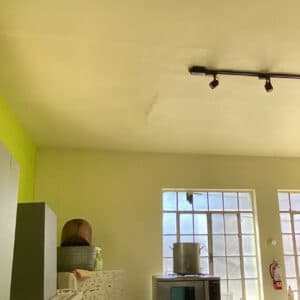An attic exists between the ceiling and roof. It insulates and protects the home, but is that space necessary? Or can a ceiling be a roof? The answer is not as straightforward as it might seem. There are several ways to blend the two, such as exposed beams, vaulted ceilings, and flat roofs.
Is the ceiling the same as the roof?
Ceilings and roofs are similar in many ways. For example, they both protect the built environment from above. The difference is that a ceiling is the upper bounds of a room, whereas a roof covers the entire structure.
Exposed Rafters
One choice is to remove the ceiling plaster and leave the rafters bare. You can then stain the timber to create visual appeal. This style gives the room an open feeling and rustic charm. The downside of exposed beams is a lack of insulation, making the space less energy efficient.
Vaulted Ceilings
You can have vaulted ceilings with or without exposed rafters. Also called cathedral ceilings, this style eschews a flat ceiling in favor of following the angle of the roofline. Unfortunately, un-vented cathedral ceilings tend to be hot and moist, leading to hidden mold. For older homes, you may need to retrofit additional ventilation for the roof.
Flat Roofs
Flat roofs have no slope and use a membrane to make them waterproof. They are easier to access for maintenance and repair than a pitched roof. You can also use it for outdoor storage or living space. The most significant disadvantage is the lack of drainage, so creating a slight pitch helps rainwater drain away.
Can a Ceiling be a Roof?
So, in the end, can a ceiling be a roof? In most instances, no. There is usually space between the upper surface of a room and the top of the house. The attic acts as a buffer and allows for insulation and ventilation. In the case of exposed rafters, the roof is also the ceiling. Whether your roof is vaulted, flat, or exposed, you can rely on Just Roofs and Gutters for all your roofing needs. Schedule an inspection online today or call us at 303-834-1126.





